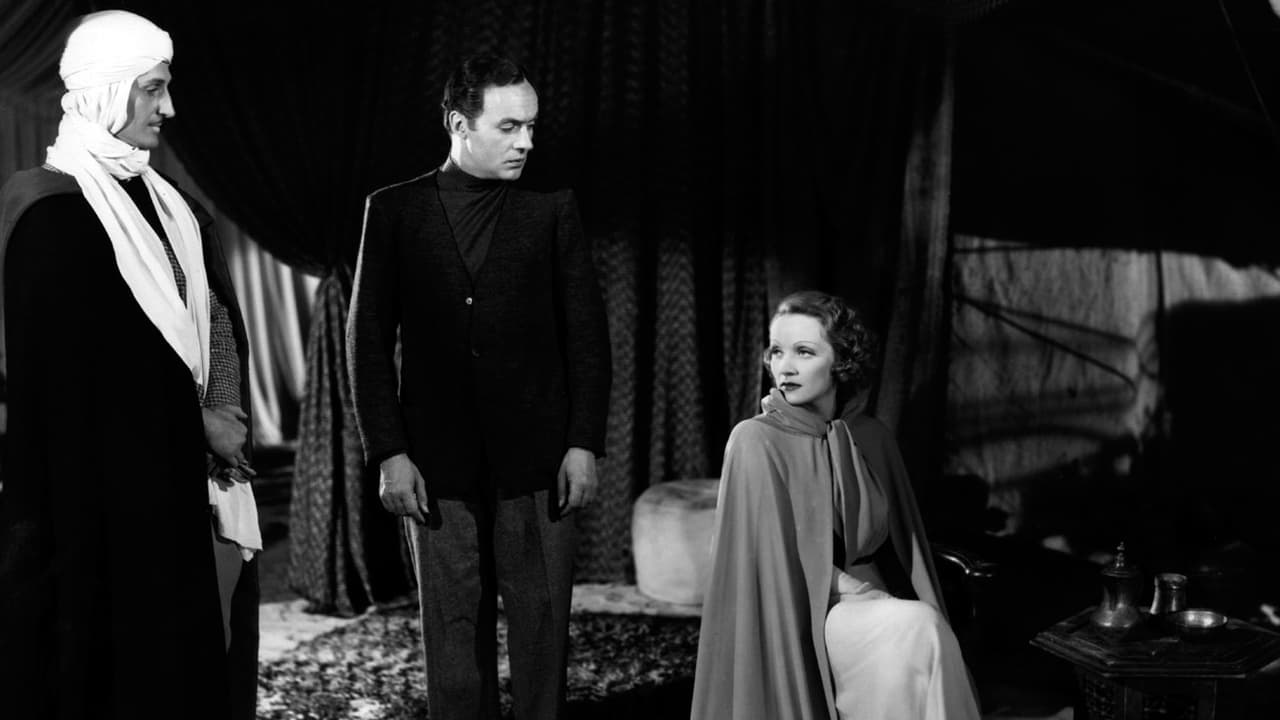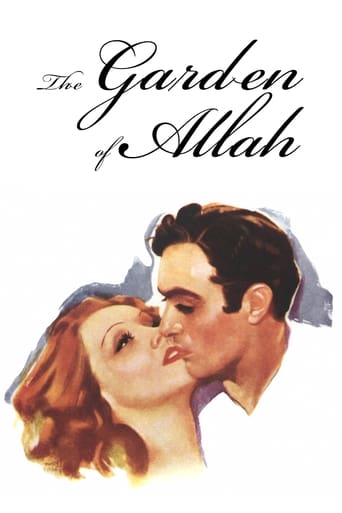

Truly Dreadful Film
... View Moreeverything you have heard about this movie is true.
... View MoreIt's fun, it's light, [but] it has a hard time when its tries to get heavy.
... View MoreAs somebody who had not heard any of this before, it became a curious phenomenon to sit and watch a film and slowly have the realities begin to click into place.
... View MoreThis giant hunk of perfumed kitsch must have seemed old-fashioned even in 1936. It's more like a mush-talking version of silent Valentino "Arabic" romantic hokum than it is like the Maria Montez "exotica" epics of a few years later, which were more lively and less pretentious. (It's easy to imagine this story working better as a silent, and it probably did-although sadly it doesn't look like Rex Ingram's 1927 version has survived.)It's funny that Dietrich went almost directly from her last Von Sternberg film to this-another movie in which the overriding concern seems to be dressing, plucking, lighting and posing her as if for glamour stills. Richard Boleslawski is no Von Sternberg, however. He made some very good films when given better material, but he can provide none of Von Sternberg's wit, irony or distinctive lunacy to this pretty, empty package. (Sadly, Boleslawski died the next year of a heart attack, aged only 47.) Beyond the flattering photography of Dietrich and young Boyer (as well as some gorgeous silhouetted desert landscapes worthy of "The Sheltering Sky"), the major virtue in this early all-Technicolor film is the handsome color pallet, which is fairly subtle for the era. Otherwise, "Garden of Allah" is very high-end hooey, attesting to the more garish end of producer Selnick's taste, a la "Duel in the Sun." I mean, a desert-set love story between an ex-convent girl and runaway monk? With dialogue like "You come from a land of fire-and I think you are made of fire!" Plus one of those central crises made of pure hot air: The protagonists love each other like no one has ever loved anyone before (or so we're told), but must give one another up because...er, well, because that way they get to experience maximum picturesque torment and heroic sacrifice. This sort of stuff can work despite itself if there's a smidge of conviction at hand. But "Allah" (in which all Arabic spoken is gibberish, a good metaphor for the film's "soulfulness") s all so hokey and artificially high-minded you might think it had been written by Elinor Glin. No wonder it was a giant flop.
... View MoreI had read up on this movie before watching it. A lot of people said it was boring and I have to agree with them. I really enjoyed the colouring and even the title of the film. Really I should be giving this film a 3/10. But I'm going to do that. I watched this movie only because Boyer and Dietrich were in it. I'd give this movie a 10/10 solely for Charles Boyer's face because it was a masterpiece in this film. We've always been used to the black and white Boyer but this film truly brings out the fullness of his face. The tortured, painful and sometimes almost pouty made his face even better. So literally watch it for its historical significance and Boyers gorgeous face. Oh yeah, and Marlene was beautiful, as always.
... View MoreThe pioneering Technicolor Cinematography (Winner of Special Technical Achievement Oscar) is indeed enchanting. Add an endless variety of glamorous costumes and a romantic cinema dream team like Marlene Dietrich and Charles Boyer, and you've got a rather pleasant "picture".Unfortunately the contrived plot as well as the over-blown acting leave much to be desired. Still, there have not been any more breathtaking Technicolor films before this one (1936), and very few since then, that can top this breathtaking visual experience of stunning colors. Cinema fans who have enjoyed the glorious color cinematography in "Robin Hood" (1938), "Jesse James" (1939) and "Gone With The Wind" (1939), will not be disappointed in the fantastic work done here. "The Garden Of Allah" will always be synonymous with brilliant color cinematography.
... View MoreThis story tells us about a Monk, Boris Androvsky (Charles Boyer) who makes excellent wine as a Monk and gets a taste of the outside world and women and just up and leaves the church and his Holy Order, disobeying God completely. Boris Androvsky meets up with a woman, Domini Enfiden, (Marlene Dietrich)on a train and notices that Boris does not even speak to her in the compartment on the train or even look at her. Domini is heart broken about her father dying after she devoted her entire life to his care until he died. Domini is advised by a priest to go to the desert and try to find herself and she meets up with Boris and gets deeply involved with him, but Boris never tells her about his past or reason for running to the desert himself. John Carradilne,(Sand diviner) is a fortune teller with the use of sand and foretells only the future and no past; he tells her that she will be happy and then something tragic will happen to her. Basil Rathbone,(Count Ferdinand Anteoni) gives a great supporting role and is also a great admirer of Domini. There is some very great love scenes which are spoken in deep love and also a great deal of Pain.
... View More